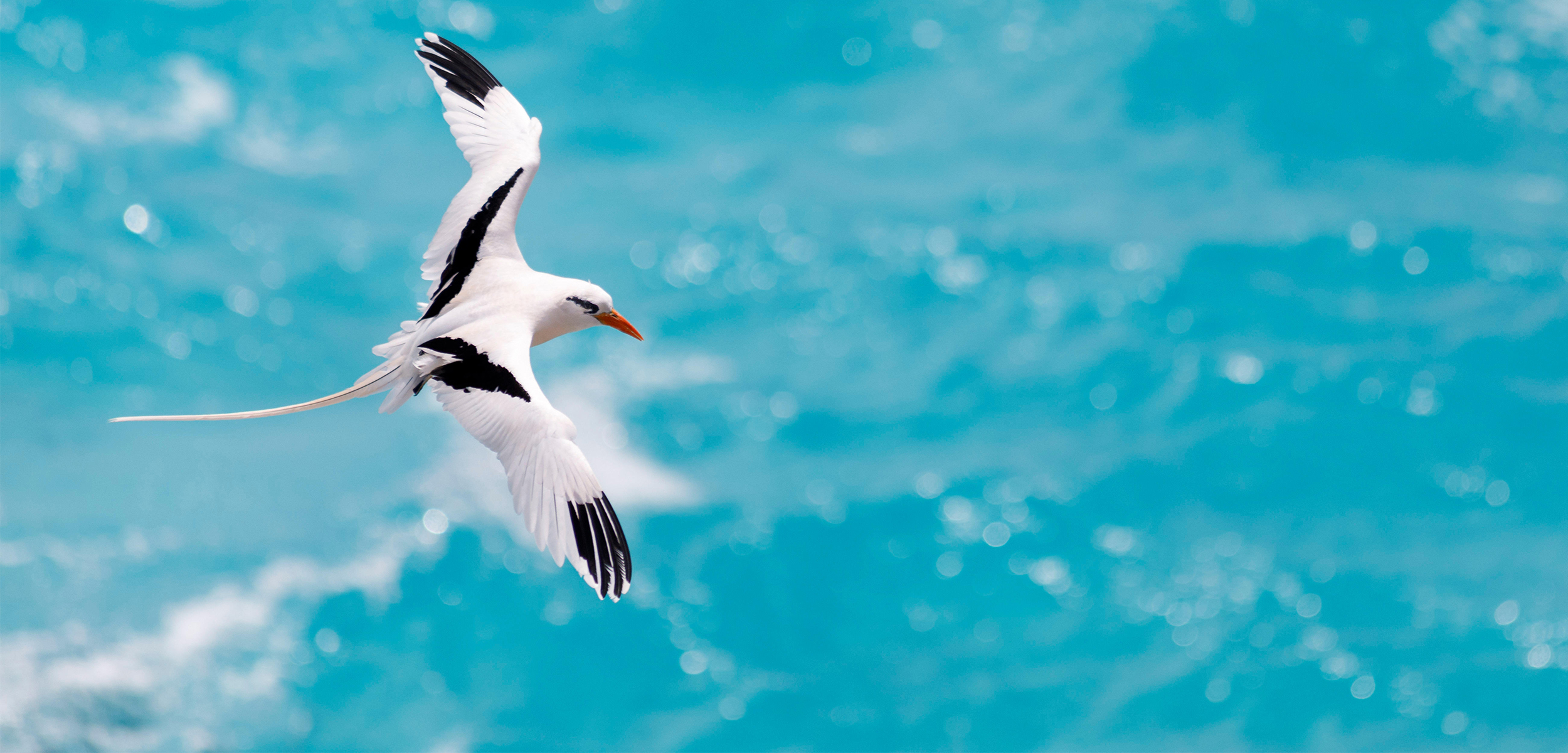In Bermuda, the Signs of the Season Are Changing
Data collected by birdwatchers reveals that the iconic white-tailed tropicbird is arriving earlier and earlier.
Article body copy
White-tailed tropicbirds spend most of the year at sea, out of sight of people. When the seabirds make their annual descent into Bermuda to breed, though, their long, streamer-like tails, snowy white plumage, and shrill calls are impossible to miss. To locals, the birds’ return to the islands is a reliable sign of spring.
But long-term records kept by birdwatchers hint that white-tailed tropicbirds, known locally as longtails, have been turning up in Bermuda earlier and earlier. Instead of being heralds of spring, these birds are potentially becoming harbingers of changes occurring in the nearby ocean, according to new research.
The birds piqued the interest of Italian biologist Letizia Campioni, who works at the Marine and Environmental Sciences Centre in Portugal, when she visited Bermuda in 2019 to study endangered Bermuda petrels. Local birders and researchers kept mentioning to her that tropicbirds were arriving earlier than they had in the past. “Is this just a perception?” she recalls wondering. “Or is there something actually going on?”
To test if peoples’ perceptions were correct, Campioni and her research collaborators analyzed data from the citizen science platform eBird, where local birders had uploaded tropicbird records going back decades. Adjusting for variation in the size of the tropicbird population and the number of birders looking for them over time, Campioni and her colleagues found that since the 1950s, the average date of the first longtail observation in Bermuda has advanced by 20 to 25 days. That works out to a shift of one day earlier roughly every three years. Seventy years ago, tropicbirds arrived in mid-March; today, they’re showing up in mid-February.
It’s a striking result, and Campioni believes climate change is the only factor that could cause such a dramatic shift. She ruled out the effects of two powerful oceanographic cycles in the Atlantic Ocean that routinely contribute to changes in animal behavior. But Campioni plans to continue teasing out the possible connection between local conditions, such as sea surface temperatures, and the birds’ earlier arrival.
White-tailed tropicbirds sit at the top of the local marine food web: they eat fish and squid, which in turn eat smaller fish and plankton. Any big changes in the birds’ behavior and ecology can be an indication that something significant is going on with the broader ecosystem, Campioni says.
Kyle Elliott, a seabird scientist at McGill University in Quebec who was not involved in the research, agrees that if the birdwatching data reflects a real shift in the birds’ behavior, the cause must be something related to the climate. “Presumably, they’re responding to either something physical at the nest site [in Bermuda],” he says, “or, more likely, to something happening at sea.” Elliott says earlier phytoplankton blooms would attract the fish that the tropicbirds eat, which would prompt the birds to arrive earlier, too.
The birds have likely adjusted their behavior in response to environmental changes before. Ornithologists in the 19th century also recorded tropicbirds arriving in the archipelago in February, says Bermudian ornithologist Miguel Mejías, who conducted graduate research on the species while at Memorial University in Newfoundland and Labrador but wasn’t involved in the recent study.
After they land in Bermuda, tropicbirds typically spend several weeks foraging and courting potential partners before they get down to breeding and raising the next generation. It’s not clear from Campioni’s research whether breeding is also happening earlier in the year. Mejías, who has been monitoring a tropicbird colony near his home since 2017, hasn’t noticed a timing change.
Given their sensitive position at the top of the local food chain, tropicbirds may be the proverbial canary—or seabird—in the coal mine, signaling changes in the marine ecosystem. Campioni hopes the study will prompt scientists to pay greater attention to how the iconic species is responding. “It’s important to understand if organisms are able to adapt to environmental changes,” Campioni says, “because they either adapt, or they disappear.”

